Is It Really Necessary To Rotate My Tires?
Tire rotation is important, but misunderstood. It can vary significantly depending on your car and the tires you use. Tire rotation is beneficial to safety and tire life. Depending on your tires, regular rotations can also keep them covered by the manufacturer’s warranty.
Why should I rotate my tires?
There are several key benefits to regular tire rotation
1.) Even tire wear
Rotating your tires ensures they wear as evenly as possible. Keeping the tread wear even lengthens the life of a tire. There are a variety of factors that can impact tire wear. If your vehicle is 2-wheel drive, the tires that receive power and torque from the engine are subject to more rapid wearing. If you neglect to regularly rotate your tires, you may need to replace them both more frequently and unevenly.
2.) Improved safety
Keeping the tread on all four tires even makes your vehicle safer. Tires adhere your vehicle to the road and help with braking, acceleration, and handling. the performance of the tire is restricted by uneven tread wear. While worn down tire tread is inevitable and will always impact performance, keeping the tread wear as even as possible will maximize safety.
3.) Reduced stress on all-wheel-drive vehicles
All-wheel drive vehicles are sensitive to variations in the tire tread. If the tread on your tires is uneven, it forces the vehicle’s differentials to rotate at different speeds constantly. Differentials can accommodate varying wheel speeds temporarily, but excess wear and tear can occur if they are forced to do this constantly.
Types of tire rotation
There are a variety of different tire rotation patterns depending on the drive type and tire size(s) of your vehicle.
1.) X-pattern
The X-pattern tire rotation swaps the front left and back right tire, and the back right and front left. This rotation pattern addresses uneven tire wear and can be done on vehicles with the same size, non-directional tires
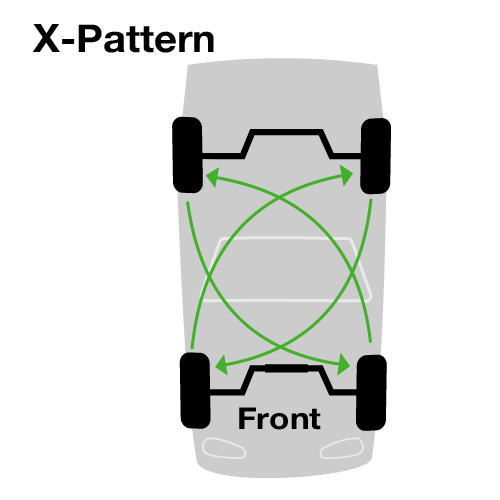
2.) Front to rear
Front to rear tire rotation switches the front tires with the rears on the same side. Vehicles with directional tires must use a front to rear rotation pattern.
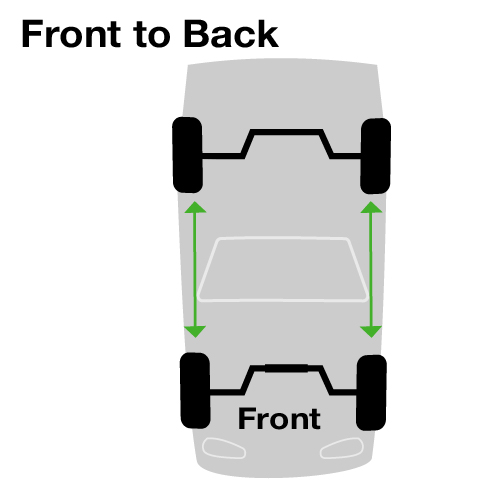
3.) Forward cross
The forward cross tire rotation pattern moves the rear right tire to the front left, the rear left tire to the right front position, and both front tires directly back the same side rear positions. Front-wheel drive vehicles with uneven tread wear benefit from this rotation pattern.
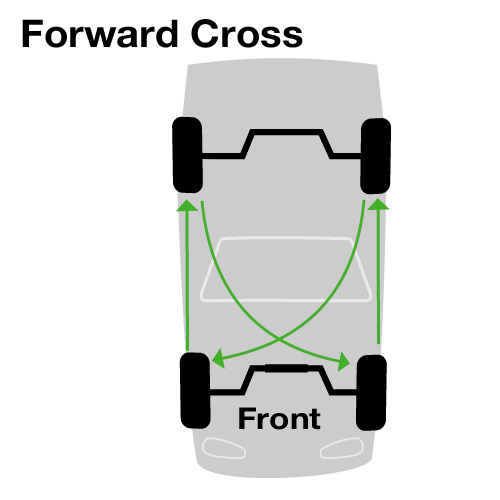
4.) Rearward cross
A rearward cross tire rotation is the opposite of the forward cross. This rotation moves the front tires to the rear positions and crosses them, moving the rear tires forward. Rear-wheel drive, all-wheel drive, and 4-wheel drive vehicles use this rotation.
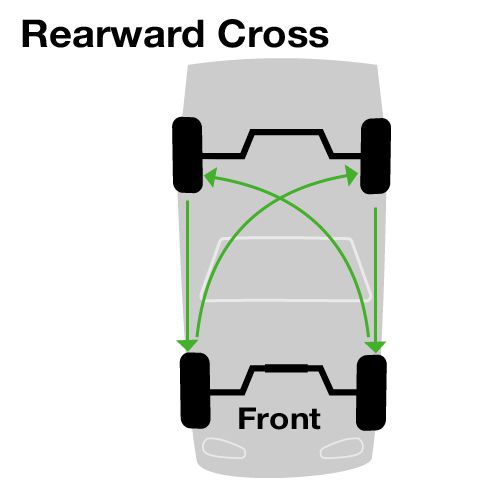
5.) Side to side
A side-to-side tire rotation simply swaps them horizontally (right rear switched to the left rear, etc.). Cars with staggered tires (wider tires, usually in the rear require this rotation pattern.
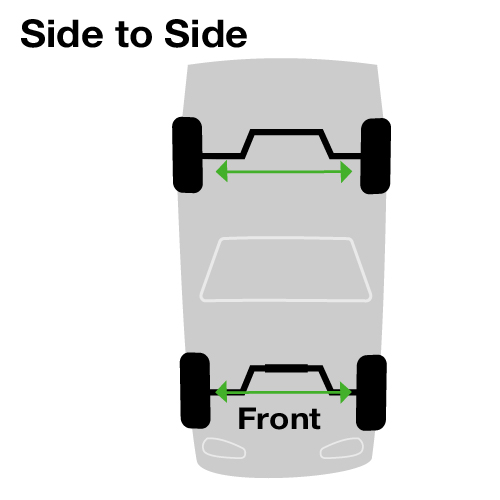
Regular tire rotation is an opportunity to inspect your vehicle.
This is an indirect benefit of regular tire rotations. When a technician rotates your tires, they will have an up-close look at your brakes, axles, suspension, and other components of the drivetrain. Regular tire rotations put eyes on these areas of your car that may not be looked at until a serious problem arises.
How often should I rotate my tires?
The frequency of tire rotation depends on your vehicle. In general, it’s a good idea to rotate your tires every 5000 miles which is typically the interval you would get your oil changed. Check your owner’s manual to see the recommended oil change interval for your vehicle. Modern cars often have higher mileage intervals. If this is the case with your car, try to rotate your tires twice a year.
Matson Point S Can Rotate Your Tires!
If it’s time for a tire rotation or any other scheduled maintenance on your vehicle, give Matson Point S a call or schedule an appointment online! Our trained mechanics will keep your vehicle running and driving properly.
